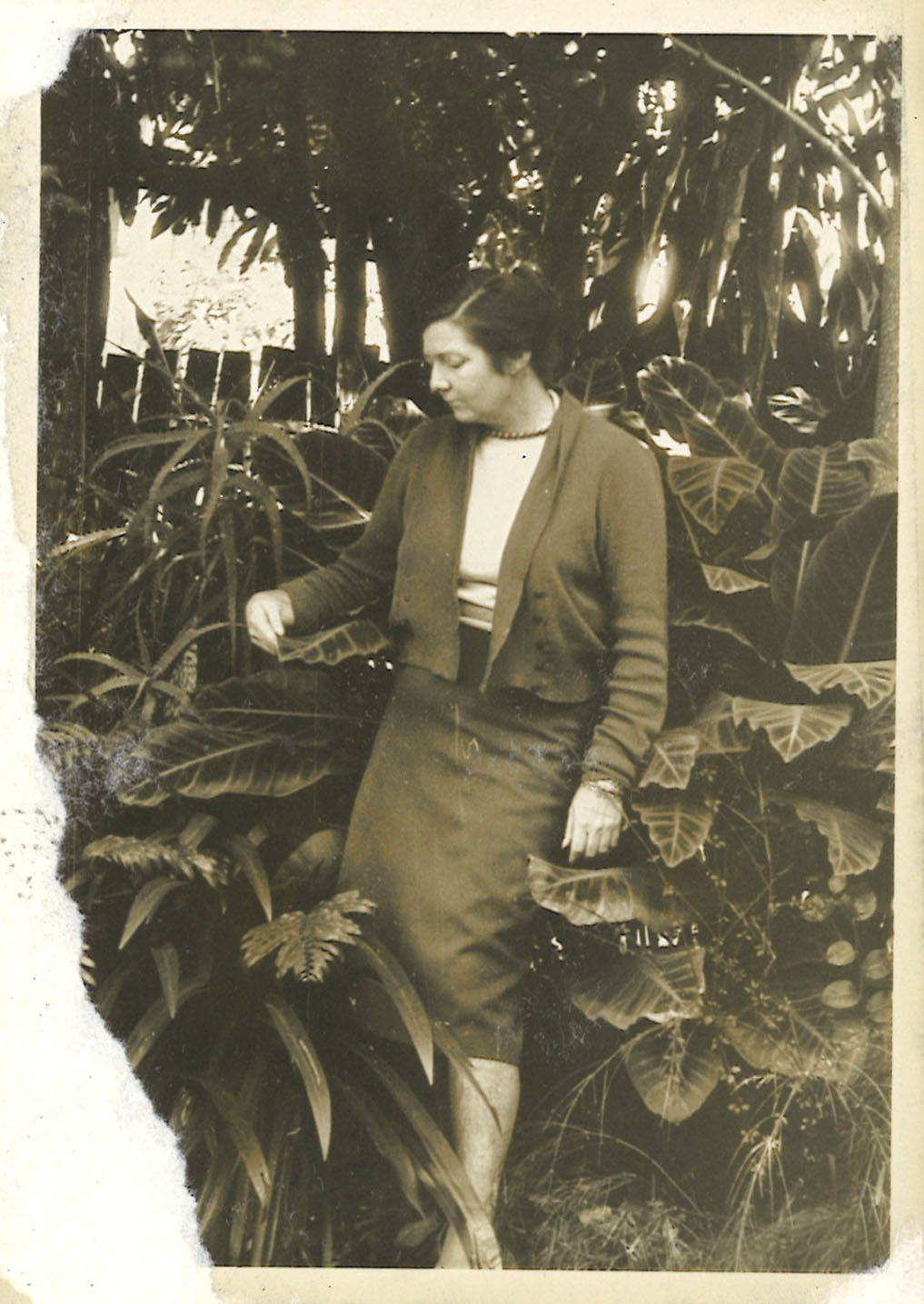|
Transcript |
 Margaret Olley in the garden, Farndon, Brisbane c.1950 Photographer Unknown
Margaret Olley in the garden, Farndon, Brisbane c.1950 Photographer Unknown
Transcript
In an interview with biographer Meg Stewart, Margaret Olley once reflected on the use of colour in her work by saying:
"As far as putting colour into my work, I was particularly influenced by the Bonnards and the Matisses that I’d seen while I was away. Sunlight is what Bonnard is about. He paints light and life. Matisse and Bonnard instinctively put colours together so they sing – pink with a bit of red, or just a surprising black dot placed somewhere. It’s magic."
As an emerging artist, Olley established herself as a landscapist. In 1947, the year she graduated from East Sydney Technical College (now National Art School), Olley won the Mosman Art Prize, judged by Lloyd Rees, with a landscape painting called New England landscape 1947. In the following year she had her first solo exhibition at Macquarie Galleries, Sydney, opened by Russell Drysdale. Of the 26 works in the exhibition, only 4 of them were still lifes, the genre she would later, almost exclusively, dedicate her career to.
In 1949, amidst the intense media attention around William Dobell’s portrait of Olley winning the Archibald Prize, she travelled to England for her first overseas adventure. In Europe, the young artist visited galleries and saw, for the first time, paintings she had only ever seen as reproductions in books – works by the likes of Cézanne, Chardin, Manet, Monet, Matisse, Bonnard and Degas.
In France and Italy, in 1951 and 1952, Olley explored the process of making monotypes as a painterly extension of her drawings. She used the process to showcase her beautiful attention to detail through expressive contour line drawing – as seen in the earliest work in this exhibition, Still life 1951.
Olley returned to Australia in 1953, following the unexpected death of her father. The Brisbane she returned to was still a large, sleepy country town, a far cry from Paris. These were difficult times for her as a young artist – she was mourning the loss of her father and struggling with alcoholism. By 1959, Olley’s family was so convinced her drinking would destroy her painting career, they opened an antique store for her in Brisbane, offering an alternative career path. In the same year, at the age of 36, Olley checked into a clinic and attended Alcoholics Anonymous (AA), commencing what would become a lifelong commitment to sobriety and the philosophy of AA.
Around this time, Olley began to experiment with colour, which was unfashionable in Australian art of the time. She was inspired by the work of the modern masters she had experienced in Europe, as seen in the flat, colourful French style of Agapanthus and tiger lilies c.1958.